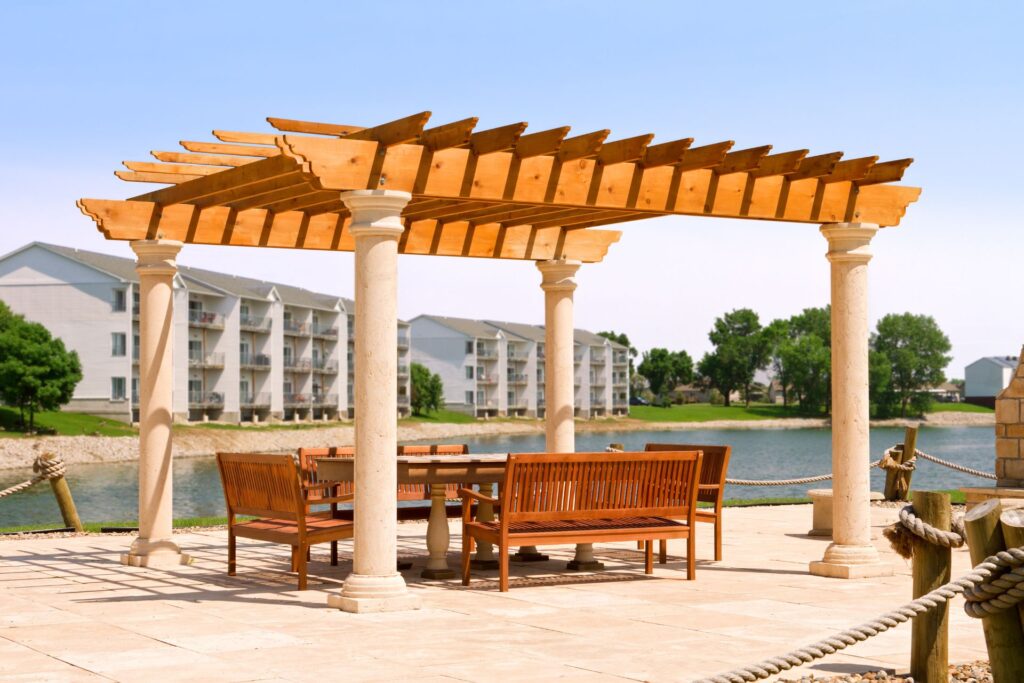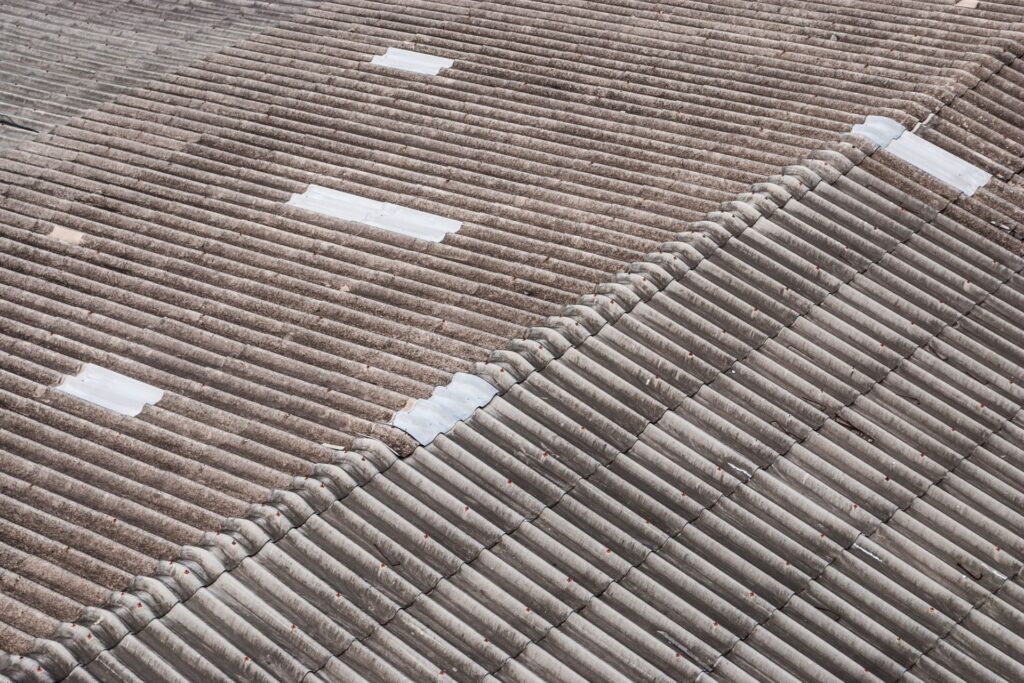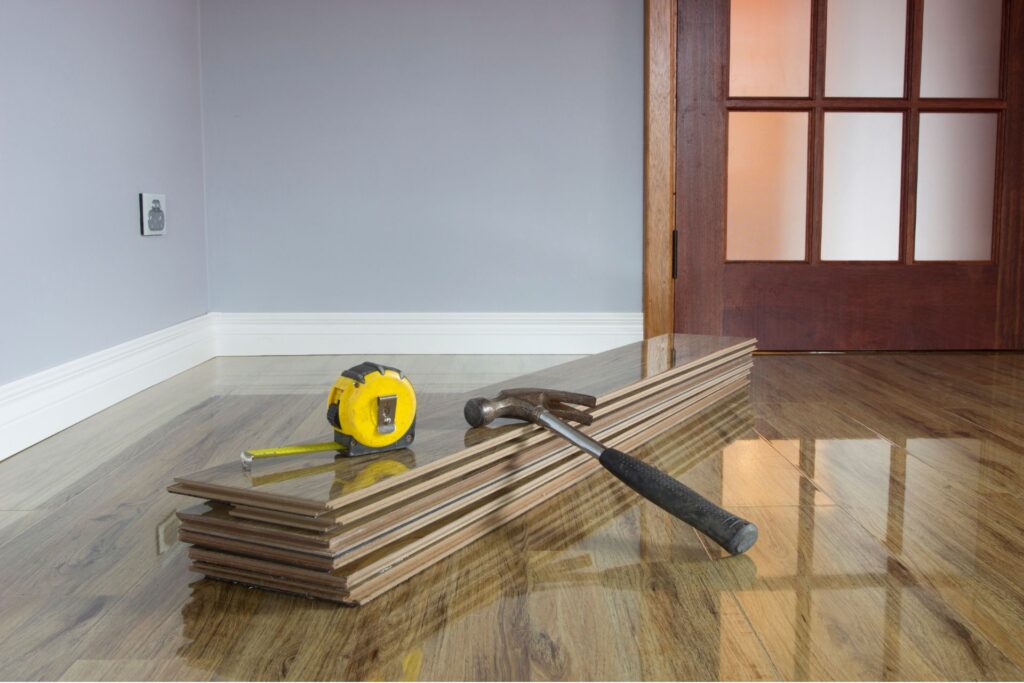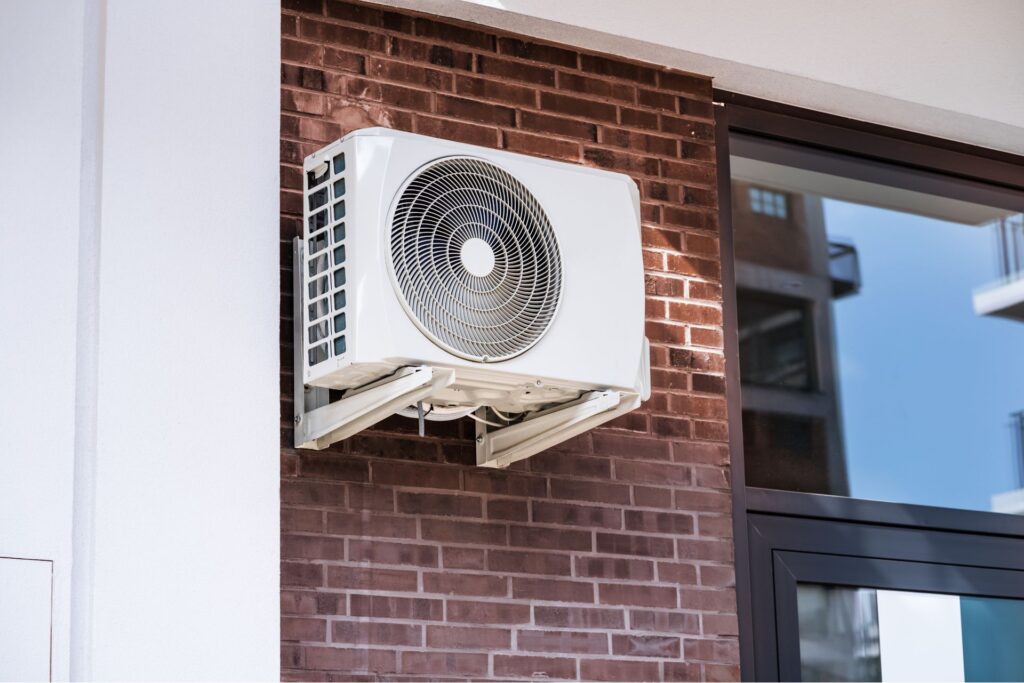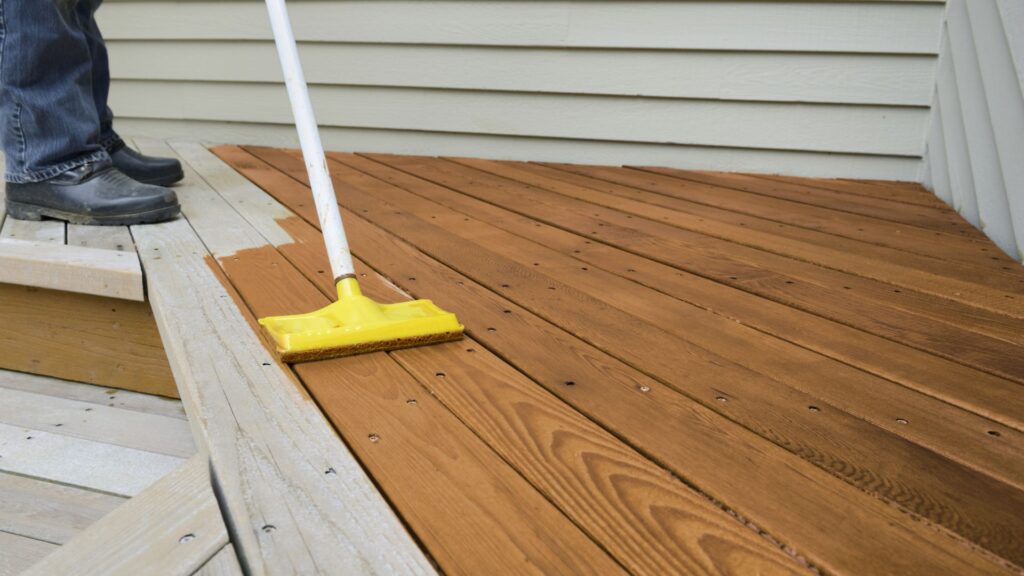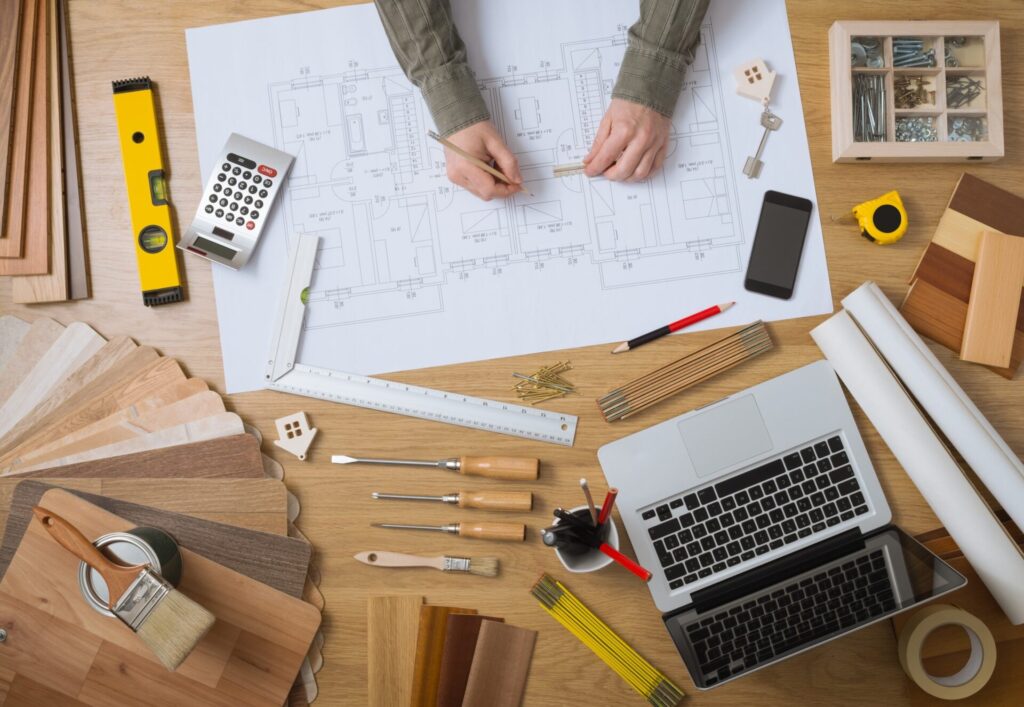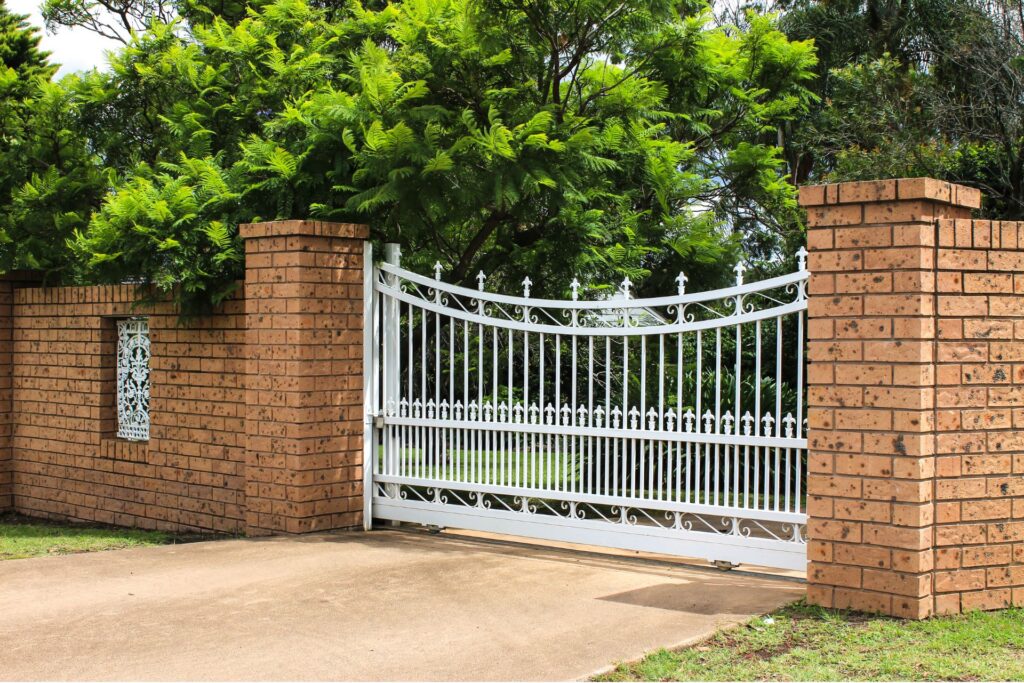Welcome to our comprehensive guide on how to live on-site while building your house in New Zealand. This unique approach offers numerous benefits, from cost savings and convenience to closer supervision of your project. However, it also comes with its own set of challenges and considerations. In this blog post, we will walk you through everything you need to know, from planning and preparation to managing daily life on a construction site, ensuring safety, and building positive relationships with contractors. Whether you’re looking to save money, stay hands-on with your project, or simply curious about the process, we’ve got you covered with practical tips, personal stories, and essential information to help you navigate this exciting journey.
Living on-site while building your house in New Zealand offers cost savings, convenience, and the ability to closely monitor progress. To do this successfully, ensure proper planning and preparation, such as setting up temporary facilities, securing utilities, and adhering to safety protocols. Create a comfortable living space, manage daily life amidst construction activities, and maintain clear communication with contractors. By following these steps, you can effectively oversee your project and enjoy the benefits of living on-site.
- Benefits Of Living On-Site
- Planning And Preparation
- Creating A Comfortable Living Space
- Managing Daily Life On A Construction Site
- Health And Safety Considerations
- Building Relationships With Contractors And Workers
- Overcoming Common Challenges
- Legal And Financial Considerations
- Personal Stories And Testimonials
- FAQs: About How To Live On Site While Building Your House NZ
- Conclusion
- Find A Professional Builders Company Near You!
Benefits Of Living On-Site
Living on-site while building your house can be an advantageous choice for many homeowners. It offers several benefits that can significantly enhance the overall construction experience. Here’s a detailed look at the key benefits:
Cost Savings
One of the most significant benefits of living on-site is the potential for cost savings. When you live on the construction site, you eliminate the need for renting temporary accommodation. This can save you a substantial amount of money, especially if the construction project is expected to take several months. Renting an apartment or house can add up quickly, and by living on-site, you can allocate those funds to other important aspects of your build. Additionally, you save on daily commuting costs, which can further add to your savings.
Convenience
Living on-site provides unparalleled convenience. You have immediate access to the construction site, which can be incredibly beneficial for overseeing the progress. You won’t have to deal with the hassle of traveling back and forth from your temporary residence to the site. This proximity means you can easily coordinate with contractors, receive deliveries, and ensure that the project is running smoothly without the added stress of daily commutes. The convenience factor alone can make living on-site a very appealing option.
Supervision
Another major advantage is the ability to closely monitor the construction progress and quality. Being on-site means you can keep a watchful eye on every phase of the build. You can catch potential issues early and ensure that the work meets your standards and expectations. This close supervision helps in maintaining quality control and can prevent costly mistakes or delays. You’ll have the opportunity to address any concerns in real time, ensuring that the final outcome aligns with your vision.
Quick Decision-Making
Living on-site also facilitates quicker decision-making. Construction projects often require prompt responses to various issues and changes. When you’re on-site, you can make decisions on the spot without having to wait for updates or schedule visits. This immediacy can help keep the project on track and within the timeline. Whether it’s a minor tweak or a significant change, your presence on-site allows for a more agile and responsive approach to managing the build.
Overall, living on-site during construction can lead to cost savings, increased convenience, better supervision, and quicker decision-making. These benefits can contribute to a more efficient and stress-free building process, ultimately resulting in a home that truly meets your needs and expectations.

Planning And Preparation
When embarking on the journey of building your dream home in New Zealand, planning and preparation are crucial. Ensuring that every detail is covered will not only streamline the construction process but also make your temporary living situation comfortable and hassle-free. Here’s a detailed look at the essential aspects of planning and preparation.
Legal Considerations: Navigating Zoning Laws, Building Codes, and Permits in NZ
Before breaking ground, it’s vital to understand the legal landscape surrounding your build. New Zealand has specific zoning laws, building codes, and permit requirements that vary depending on the region.
- Zoning Laws: These laws determine how land can be used in different areas. For instance, some zones are designated for residential use, while others are for commercial or industrial purposes. Understanding the zoning laws for your property ensures that your construction plans comply with local regulations and avoid potential legal issues.
- Building Codes: These are standards set by authorities to ensure buildings are safe, healthy, and durable. The New Zealand Building Code covers aspects such as structural stability, fire safety, access, moisture control, and energy efficiency. Familiarize yourself with these codes to ensure your construction project meets all required standards.
- Permits: Before starting construction, obtaining the necessary permits is essential. This might include building consent, resource consent, and other specific permits depending on your project’s scope. Applying for these permits well in advance can prevent delays in your construction timeline.
Site Setup: Preparing a Safe and Livable Area On-Site
Once you’ve navigated the legal requirements, the next step is setting up your construction site. Ensuring that your site is safe and livable during the building process is crucial for a smooth experience.
- Safety Measures: Implementing robust safety protocols is essential to protect everyone on-site. This includes fencing off hazardous areas, providing adequate signage, and ensuring that all workers are aware of safety procedures. Regular safety inspections can help identify and mitigate risks promptly.
- Living Area Setup: Designate a specific area for your temporary living arrangements. This space should be far enough from the active construction zone to avoid dust, noise, and potential hazards. Setting up a comfortable and functional living area can significantly impact your overall well-being during the construction period.
Temporary Facilities: Setting Up Comfortable Temporary Accommodation
Living on-site during construction often means setting up temporary accommodation. Whether you opt for a caravan, portable cabin, or another form of temporary housing, ensuring these facilities are comfortable is key.
- Caravans and Portable Cabins: These options are popular due to their convenience and flexibility. Caravans are mobile and can be easily relocated if needed, while portable cabins offer more space and can be customized to your needs. Whichever option you choose, make sure it is insulated, secure, and provides adequate living space.
- Interior Setup: Furnish your temporary accommodation with essentials such as a comfortable bed, cooking facilities, and storage solutions. Prioritize creating a cozy and functional space where you can relax after a long day at the construction site.
Utilities: Ensuring Access to Water, Electricity, and Sanitation
Access to utilities is a fundamental aspect of living on-site during construction. Proper planning and setup of water, electricity, and sanitation facilities will ensure your temporary home is fully functional.
- Water Supply: Establish a reliable water supply for drinking, cooking, and cleaning. This might involve connecting to a local water source, installing a water tank, or using portable water containers. Ensure that the water supply is safe and meets your daily needs.
- Electricity: Setting up a stable power source is crucial for lighting, appliances, and other electrical needs. Depending on your location and available resources, you might connect to the local grid, use a generator, or install solar panels. Ensure that your electrical setup is safe and compliant with regulations.
- Sanitation: Proper sanitation facilities are essential for hygiene and comfort. This includes setting up portable toilets, a septic system, or connecting to the local sewage system if available. Additionally, consider waste management solutions to keep the site clean and organized.
Living on-site while building your home in New Zealand requires meticulous planning and preparation. By understanding legal considerations, setting up a safe and livable area, arranging comfortable temporary accommodation, and ensuring access to essential utilities, you can make the construction period more manageable and enjoyable. Proper preparation not only enhances your living conditions but also contributes to a smoother and more efficient building process.

Creating A Comfortable Living Space
Living on-site during the construction of your home can be challenging, but with proper planning and attention to detail, you can create a comfortable and safe living space. Here are some key aspects to consider:
Safety Measures
First and foremost, safety should be your top priority. Begin by fencing off the construction area to keep unauthorized individuals out and to protect yourself and your family from potential hazards. A sturdy fence will prevent accidents and ensure that children and pets are kept away from dangerous areas. Additionally, make sure to secure all tools and materials. Leaving tools scattered around can lead to injuries and can also tempt theft. Create a designated storage area where all tools are kept when not in use, and make sure this area is locked and out of reach.
Living Essentials
Next, focus on furnishing your temporary living space with all the essentials. Think about the basic needs: bedding, kitchen facilities, and storage. Your temporary home should have comfortable sleeping arrangements, whether it’s beds or air mattresses. Equip your kitchen area with the necessary appliances and utensils to prepare meals. Consider a small refrigerator, microwave, and portable stove. Don’t forget about storage – you’ll need a place to keep your clothes, personal items, and food supplies organized. Shelving units, plastic bins, and portable wardrobes can be incredibly useful in maximizing your space.
Weather Protection
Living on-site means you’ll be exposed to the elements, so weather protection is crucial. Insulate your temporary structures to keep them warm during cold weather and cool during the summer. Proper insulation will not only make your living space more comfortable but also help reduce energy costs. Waterproofing is equally important. Ensure that your temporary living quarters are protected from rain and moisture. Use tarps, and weatherproof materials, and seal any gaps or cracks to keep water out and prevent dampness and mold.
Personal Space
Maintaining a sense of privacy and personal comfort is essential for your well-being. Even in a temporary setup, create separate areas for sleeping, eating, and relaxing. Use room dividers or curtains to delineate different zones within your living space. Personalize your area with familiar items such as photos, favorite blankets, or other comfort items to make the space feel more like home.
By paying attention to these details, you can ensure that living on-site during your home construction is not only feasible but also comfortable. With the right safety measures, living essentials, weather protection, and personal space considerations, you’ll be well-equipped to handle the temporary challenges and stay focused on the exciting progress of your new home.

Managing Daily Life On A Construction Site
Living on a construction site presents unique challenges and opportunities. It’s crucial to strike a balance between the ongoing construction activities and your daily routine to ensure a smooth and stress-free experience. Here are some key aspects to consider when managing daily life on a construction site:
Routine and Schedule
Balancing construction activities with your daily life requires careful planning and flexibility. Establishing a routine can help you stay organized and maintain a sense of normalcy amidst the chaos.
1. Set a Daily Schedule: Create a schedule that accommodates both the construction work and your personal activities. Identify peak construction times and plan your day around them. For instance, if construction is noisy during the morning, schedule quiet activities like reading or working from home in the afternoon.
2. Designate Living Areas: Clearly define living spaces separate from construction zones. This helps create a safe and comfortable environment for you and your family. Use temporary partitions or screens to minimize dust and debris.
3. Meal Planning: Plan your meals ahead of time to avoid disruption. Consider using slow cookers or preparing meals in bulk during quieter times. This reduces the stress of cooking in a potentially chaotic environment.
4. Communication with Contractors: Maintain open communication with your contractors. Discuss the daily schedule, expected disruptions, and any special requirements you may have. This helps avoid surprises and ensures everyone’s needs are met.
Noise and Disturbances
Construction noise and interruptions can be a significant challenge. Finding ways to cope with these disturbances is essential for maintaining your sanity.
1. Noise Reduction Strategies: Invest in noise-canceling headphones or earplugs to block out construction noise. White noise machines or background music can also help mask the sounds of construction.
2. Quiet Zones: Create designated quiet zones within your living area. These can be used for work, relaxation, or sleep. Make sure these areas are as far from the construction zone as possible.
3. Flexible Work Hours: If you work from home, consider adjusting your work hours to align with quieter times on the construction site. Early mornings or late evenings might be less noisy and more conducive to productivity.
4. Regular Breaks: Take regular breaks away from the construction site. A walk in the park or a visit to a local café can provide a much-needed respite from the noise and activity.
Family Considerations
Managing the needs of your family, especially children and pets, requires extra attention during construction.
1. Safety First: Ensure that the construction site is safe for children and pets. Keep hazardous materials and tools out of reach. Establish clear boundaries and rules for the construction areas.
2. Engage Children: Explain the construction process to your children in an age-appropriate manner. Engage them in activities related to the project, such as choosing paint colors or designing their new room. This can make them feel involved and reduce anxiety.
3. Pet Care: Create a safe and quiet space for your pets away from the construction zone. Maintain their regular feeding and exercise schedule to minimize stress.
4. Childcare Arrangements: If possible, arrange for childcare during peak construction times. This ensures that your children are not exposed to excessive noise and potential hazards.
Stress Management
Living on a construction site can be stressful. Taking proactive steps to manage stress and maintain mental health is crucial.
1. Self-Care: Prioritize self-care activities such as exercise, meditation, and hobbies. These can help you relax and recharge amidst the construction chaos.
2. Support System: Lean on your support system, whether it’s family, friends, or online communities. Sharing your experiences and challenges can provide emotional relief and practical advice.
3. Professional Help: Don’t hesitate to seek professional help if the stress becomes overwhelming. Therapists or counselors can offer coping strategies and support.
4. Positive Mindset: Focus on the long-term benefits of the construction project. Visualize the completed space and remind yourself that the disruptions are temporary. Celebrate small milestones to stay motivated.
By implementing these strategies, you can effectively manage daily life on a construction site, ensuring a balanced and harmonious living environment during this transformative period.

Health And Safety Considerations
When living on-site during construction, prioritizing health and safety is paramount. This section delves into the various aspects you need to consider to ensure a secure and healthy environment.
Safety Protocols
Adhering to established safety guidelines and protocols is the first step in maintaining a safe living and working space. These protocols include wearing appropriate protective gear, such as helmets and safety glasses, and ensuring that all tools and equipment are used correctly. Additionally, clear signage indicating hazardous areas and safety procedures should be prominently displayed to inform and remind everyone on-site of the potential risks.
Emergency Preparedness
Being prepared for potential emergencies is crucial. This involves having a well-thought-out emergency plan that covers various scenarios, such as fires, natural disasters, or medical emergencies. Make sure that all family members and workers are familiar with this plan and conduct regular drills to reinforce the procedures. Keeping a fully stocked first aid kit and ensuring easy access to emergency contact numbers can make a significant difference in the event of an incident.
Health Precautions
Maintaining a hygienic living environment amidst construction chaos can be challenging but is essential for your health. Regular cleaning routines should be established to minimize dust and debris, which can cause respiratory issues and other health problems. Proper waste disposal methods should be implemented to avoid attracting pests and to maintain overall cleanliness. Additionally, ensure that there are adequate sanitary facilities, including clean toilets and handwashing stations, to prevent the spread of germs and bacteria.
Regular Inspections
Conducting regular safety checks is vital to identify and mitigate any potential hazards promptly. This involves routine inspections of the construction site to ensure that safety measures are being followed and that any issues are addressed immediately. Look out for loose wires, unstable structures, and other potential dangers. These inspections should be documented, and any corrective actions taken should be recorded to ensure ongoing compliance with safety standards.
Incorporating these health and safety considerations into your on-site living plan will help create a safer and healthier environment for everyone involved. By adhering to safety protocols, being prepared for emergencies, maintaining hygiene, and conducting regular inspections, you can significantly reduce the risks associated with living on a construction site. Prioritizing health and safety not only protects your well-being but also ensures the smooth progress of your construction project.

Building Relationships With Contractors And Workers
Building strong relationships with contractors and workers is crucial for the success of any construction project. Good relationships can lead to better project outcomes, improved efficiency, and a more pleasant working environment. Here’s how to foster these relationships effectively:
Effective Communication
One of the most important aspects of building relationships with contractors and workers is establishing clear and open communication channels. This involves:
- Regular Meetings: Schedule regular meetings to discuss project progress, address concerns, and plan future tasks. These meetings provide an opportunity for everyone to stay informed and on the same page.
- Open Dialogue: Encourage an open dialogue where workers and contractors feel comfortable sharing their ideas and concerns. This can help identify potential issues early and foster a collaborative environment.
- Clear Instructions: Provide clear and concise instructions to avoid misunderstandings and ensure everyone knows their responsibilities. Clear communication helps prevent mistakes and keeps the project on track.
Respect and Courtesy
Maintaining a positive relationship with construction workers and contractors requires showing respect and courtesy at all times. This includes:
- Professionalism: Treat all workers and contractors with professionalism and respect. This includes acknowledging their skills and expertise and valuing their contributions to the project.
- Recognition and Appreciation: Regularly acknowledge and appreciate the hard work and dedication of your team. A simple thank you or public recognition can go a long way in boosting morale and motivation.
- Conflict Resolution: Address any conflicts or issues promptly and fairly. Listening to all sides and finding a mutually agreeable solution helps maintain a harmonious working environment.
Feedback and Input
Providing constructive feedback and seeking input from workers and contractors is essential for continuous improvement and fostering a collaborative atmosphere. Consider the following:
- Constructive Feedback: Offer feedback that is specific, actionable, and focused on improvement. Avoid criticism that could demoralize workers; instead, provide guidance on how to improve.
- Regular Reviews: Conduct regular performance reviews to discuss what is going well and what could be improved. This helps workers understand their strengths and areas for development.
- Encourage Suggestions: Encourage workers and contractors to share their suggestions for improving the project. Often, those on the ground have valuable insights that can lead to better practices and outcomes.
By focusing on effective communication, respect and courtesy, and constructive feedback, you can build strong, productive relationships with contractors and workers. These relationships not only enhance the working environment but also contribute to the overall success of your construction projects.
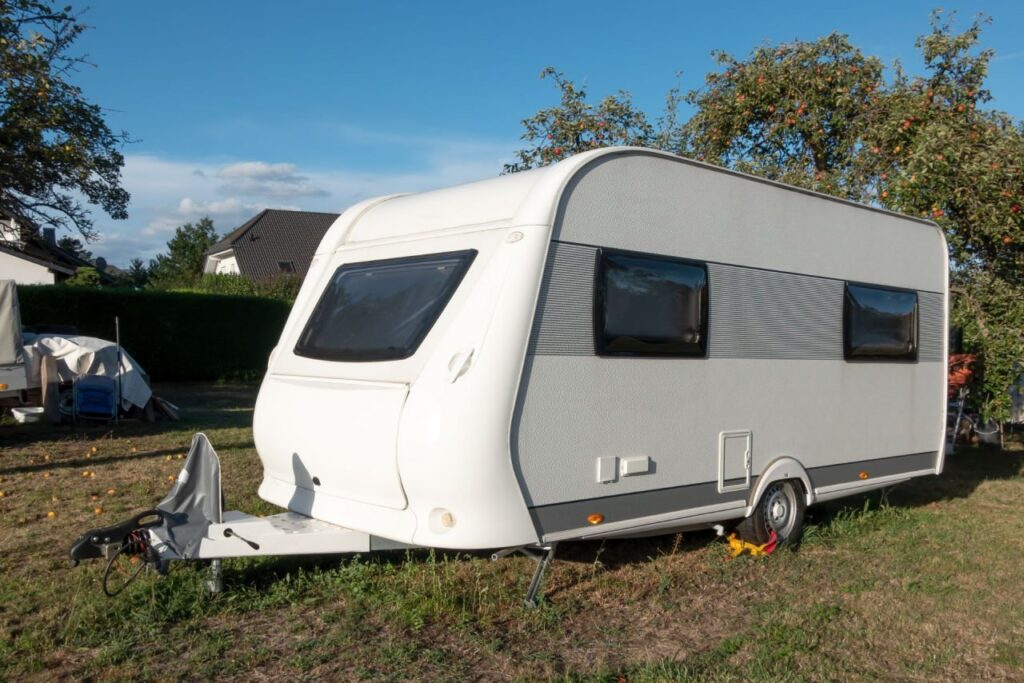
Overcoming Common Challenges
When undertaking any construction or renovation project, it’s inevitable to encounter various challenges. Here’s how you can effectively tackle some of the most common obstacles you might face:
Weather Delays
Weather can be one of the most unpredictable elements affecting your project timeline. Rain, wind, and extreme temperatures can all cause significant delays. Here are a few strategies to mitigate the impact of weather on your project:
- Plan Ahead: Utilize weather forecasts to schedule critical tasks when the weather is most likely to be favorable. Consider seasonal trends and avoid starting major outdoor work during the rainy season.
- Flexibility: Build some buffer time into your project schedule to accommodate potential weather delays. This flexibility can help keep the overall timeline on track.
- Protective Measures: Use temporary shelters, tarps, and other protective materials to safeguard your site and materials from weather damage. This can allow some work to continue even when conditions aren’t ideal.
Unexpected Costs
Unforeseen expenses can quickly derail your budget if you’re not prepared. Effective cost management and budgeting practices are crucial for maintaining financial control over your project. Here’s how to handle unexpected costs:
- Contingency Fund: Allocate a contingency fund, typically around 10-20% of your total budget, to cover unforeseen expenses. This fund acts as a financial safety net.
- Regular Monitoring: Keep a close eye on your budget and track expenses regularly. This helps in identifying cost overruns early and making necessary adjustments.
- Transparent Communication: Maintain open communication with your contractors and suppliers about any potential additional costs. Understanding where extra expenses might arise can help you plan accordingly.
Supply Delays
Delays in material supply can halt progress and extend your project timeline. Efficiently managing your supply chain is essential to avoid such disruptions:
- Early Ordering: Order materials well in advance of when they will be needed. This helps account for lead times and any unexpected delays in delivery.
- Reliable Suppliers: Work with reputable suppliers known for their reliability and punctuality. Building strong relationships with suppliers can also lead to better service.
- Backup Plans: Have alternative suppliers or materials identified in case your primary choice is unavailable. Flexibility in material choices can prevent delays from becoming critical issues.
Quality Control
Ensuring high-quality workmanship and materials is vital for the success and longevity of your project. Here’s how you can maintain rigorous quality control:
- Regular Inspections: Conduct frequent site inspections to monitor the quality of work and materials being used. This helps catch any issues early before they become significant problems.
- Clear Standards: Set clear quality standards and communicate them to all team members. Everyone involved should understand the level of quality expected.
- Skilled Workforce: Hire experienced and skilled professionals who are known for their high standards of workmanship. A competent team is more likely to deliver superior results.
By proactively addressing these common challenges, you can keep your construction or renovation project on track, on budget, and up to the highest standards of quality.

Legal And Financial Considerations
Insurance Coverage
Understanding your insurance needs and the coverage available is crucial when undertaking any building or renovation project. It’s not just about protecting the physical structure; it’s about safeguarding your investment and ensuring peace of mind. In New Zealand, builders and homeowners alike need to be aware of various insurance policies that can cover construction projects, including public liability insurance, contract works insurance, and professional indemnity insurance.
- Public Liability Insurance protects against claims for damages or injuries that occur as a result of the construction work. This type of insurance is essential as it covers any accidents that might happen on the building site, ensuring that you’re not left out of pocket should an unfortunate incident occur.
- Contract Works Insurance is another vital policy. This covers the building work itself from risks such as fire, theft, or natural disasters while the project is still under construction. It’s essential for both builders and property owners to have this coverage to avoid financial loss if something goes wrong before the project is completed.
- Professional Indemnity Insurance is particularly important for architects, engineers, and other professionals involved in the project. It covers claims of negligence or mistakes in the design and planning process. Having this insurance ensures that any errors that could potentially result in costly repairs or modifications are covered.
Financing Options
Exploring your financing options and managing budgets effectively can make or break a construction project. In New Zealand, there are several ways to finance your building project, each with its own advantages and considerations.
- Bank Loans are the most common form of financing. Many banks offer specific construction loans that allow you to draw down funds in stages as the build progresses. This can help manage cash flow and ensure that you only pay interest on the money you have actually used.
- Home Equity Loans can be an option if you have sufficient equity in your current property. These loans typically offer lower interest rates and can provide the funds needed for your project without the need for additional borrowing.
- Personal Savings are the most straightforward way to finance a build. Using savings avoids the need for loans and interest payments, but it requires having a substantial amount of money available upfront.
- Government Grants and Incentives might also be available, particularly for projects that include energy-efficient designs or sustainable building practices. Investigating these options can provide additional funding sources and reduce overall costs.
Managing your budget is just as important as securing the funds. Creating a detailed budget that includes all potential costs, from materials and labor to permits and inspections, helps ensure you stay on track financially. Regularly reviewing and updating your budget as the project progresses will help you avoid unexpected expenses and keep the project within financial limits.
Legal Compliance
Ensuring compliance with New Zealand building regulations and standards is essential for any construction project. These regulations are in place to ensure that buildings are safe, healthy, and durable.
- Building Consents are required for most construction work. This legal approval ensures that your plans comply with the Building Act 2004 and the Building Code. Without consent, you risk having to undo or redo work, which can be costly and time-consuming.
- Resource Consent might also be necessary, especially if your project affects the environment or the surrounding community. These consents ensure that the project meets local planning rules and regulations.
- Health and Safety Regulations are another critical area of compliance. Construction sites can be hazardous, and it’s essential to adhere to health and safety laws to protect workers and the public. This includes providing proper safety equipment, training, and ensuring safe work practices are followed.
- Environmental Regulations must also be considered. This includes managing waste, reducing environmental impact, and adhering to rules regarding water use, energy efficiency, and emissions.
By understanding and addressing these legal and financial considerations, you can ensure that your building project runs smoothly, stays within budget, and meets all regulatory requirements. This approach not only protects your investment but also contributes to the creation of safe, sustainable, and compliant structures.
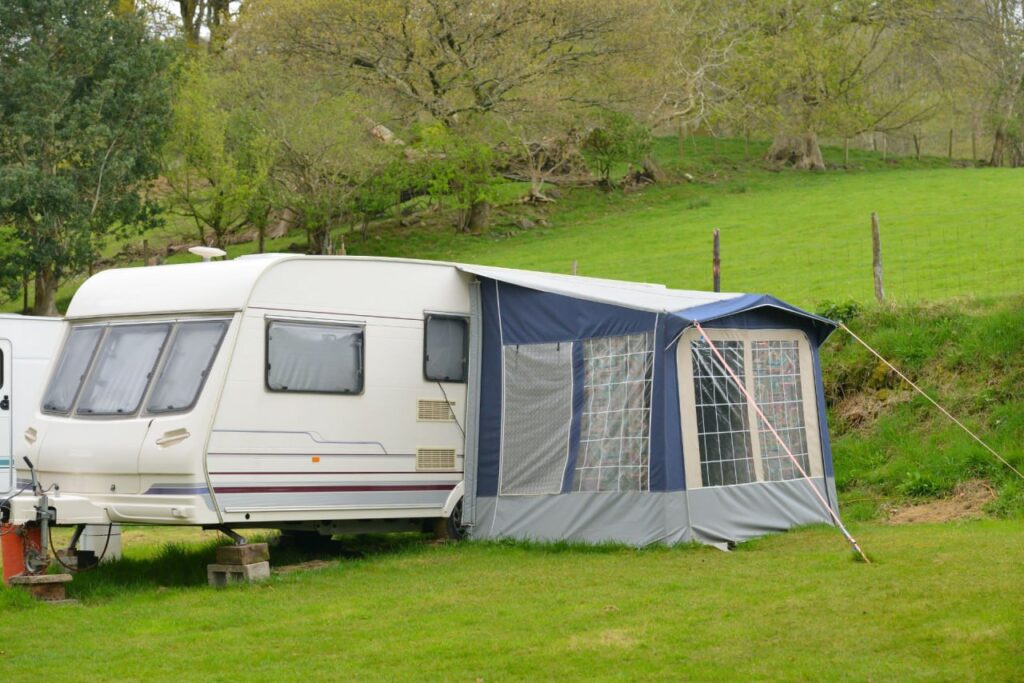
Personal Stories And Testimonials
Case Studies
Living on-site during the construction of a house is a unique experience that offers a firsthand look at the building process. To bring this to life, we can explore several real-life case studies. For instance, the Smith family decided to stay on their property while their dream home was being built. Despite the challenges of noise, dust, and temporary living conditions, they were able to closely monitor progress, make immediate decisions, and build a strong relationship with their builders. Their experience highlights the benefits of being present on-site, such as catching potential issues early and ensuring the work meets their expectations.
Similarly, the Johnsons opted to live in a caravan on their site during their home’s renovation. Their story illustrates the importance of proper planning and communication. They faced difficulties like managing space in the caravan and coordinating daily activities with the construction schedule. However, they appreciated the ability to oversee the project daily and felt more in control of the outcomes. These case studies offer valuable insights for anyone considering living on-site during construction.
Lessons Learned
Living on-site during construction isn’t without its lessons. Those who have gone through it often share that patience and flexibility are crucial. The unexpected can and will happen, whether it’s a delay in material delivery or unplanned weather disruptions. Families have learned to adapt quickly and maintain open communication with their builders to navigate these challenges smoothly.
Another key lesson is the importance of setting up a comfortable temporary living space. Whether it’s a caravan, a temporary structure, or even staying in a part of the house that’s not under construction, ensuring that the temporary accommodation is livable can significantly reduce stress. Families also emphasize the need for a clear plan for daily routines, such as cooking, cleaning, and personal hygiene, to maintain a semblance of normalcy.
Tips and Advice
Drawing from the experiences of those who have lived on-site, here are some practical tips and advice:
1. Plan Ahead: Before construction starts, create a detailed plan for your temporary living arrangements. Consider aspects like power supply, water, and sanitation. Having a well-thought-out plan can prevent many inconveniences.
2. Communicate Regularly: Establish regular communication with your builder. Weekly meetings can help keep you updated on progress and address any concerns promptly. This ensures everyone is on the same page and can make adjustments as needed.
3. Be Flexible: Understand that construction timelines can be fluid. Be prepared for delays and have contingency plans in place. Flexibility will help you manage stress and handle unexpected changes better.
4. Safety First: Living on a construction site comes with safety risks. Set clear boundaries for areas that are off-limits, especially for children and pets. Ensure that your temporary living space is safe and secure.
5. Stay Organized: Keep track of all construction documents, plans, and communications. Staying organized will help you quickly reference important information and make informed decisions.
6. Maintain a Positive Attitude: Living on-site can be challenging, but maintaining a positive outlook can make the experience more enjoyable. Focus on the end goal and the excitement of seeing your new home take shape.
By sharing these personal stories and lessons learned, you can gain a comprehensive understanding of what it’s like to live on-site during construction. The insights and practical advice from those who have been through it can help you prepare better and make informed decisions, ensuring a smoother and more rewarding experience.

FAQs: About How To Live On Site While Building Your House NZ
Conclusion
Living on-site during construction can be both challenging and rewarding, and this blog post has highlighted several key considerations for making it a smooth experience. We discussed practical tips such as setting up temporary living spaces, ensuring safety, managing utilities, and staying organized throughout the process. If you’re contemplating living on-site while building your house, it’s important to weigh the pros and cons, prepare thoroughly, and remain flexible to adapt to unexpected situations. Ultimately, this approach can save time and money, providing a unique opportunity to monitor progress and make timely decisions. As you move forward, don’t hesitate to seek professional advice to navigate any complexities and share your experiences with others who might benefit from your journey.
Find A Professional Builders Company Near You!
- Auckland Builders For Small Jobs
- Builders Alexandra
- Builders Ashburton
- Builders Auckland
- Builders Blenheim
- Builders Cambridge
- Builders Central Otago
- Builders Christchurch
- Builders Clyde
- Builders Cromwell
- Builders Dunedin
- Builders Feilding
- Builders Gisborne
- Builders Hamilton
- Builders Hastings
- Builders Havelock North
- Builders Hawkes Bay
- Builders Hibiscus Coast
- Builders Invercargill
- Builders Johnsonville
- Builders Kapiti
- Builders Kerikeri
- Builders Levin
- Builders Lower Hutt
- Builders Manawatu
- Builders Masterton
- Builders Mosgiel
- Builders Napier
- Builders Nelson
- Builders New Plymouth
- Builders Oamaru
- Builders Paihia
- Builders Palmerston North
- Builders Paraparaumu
- Builders Porirua
- Builders Pukekohe
- Builders Queenstown
- Builders Rangiora
- Builders Rolleston
- Builders Taupo
- Builders Tauranga
- Builders Te Awamutu
- Builders Timaru
- Builders Tokoroa
- Builders Upper Hutt
- Builders Waikanae
- Builders Wanaka
- Builders Warkworth
- Builders Wellington
- Builders West Auckland
- Builders Whakatane
- Builders Whanganui
- Builders Whangarei
- Handyman Wellington
- Home Builders Rotorua
- Kitchen Removal Service Auckland
- Wellington Builders For Small Jobs
About the Author:
Mike Veail is a recognized digital marketing expert with over 6 years of experience in helping tradespeople and small businesses thrive online. A former quantity surveyor, Mike combines deep industry knowledge with hands-on expertise in SEO and Google Ads. His marketing strategies are tailored to the specific needs of the trades sector, helping businesses increase visibility and generate more leads through proven, ethical methods.
Mike has successfully partnered with numerous companies, establishing a track record of delivering measurable results. His work has been featured across various platforms that showcase his expertise in lead generation and online marketing for the trades sector.
Learn more about Mike's experience and services at https://theleadguy.online or follow him on social media:



